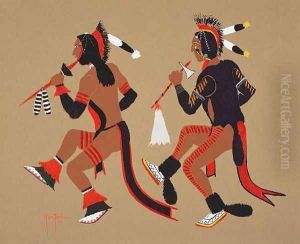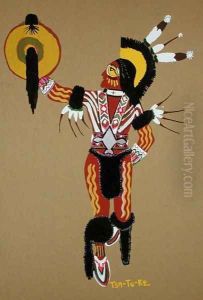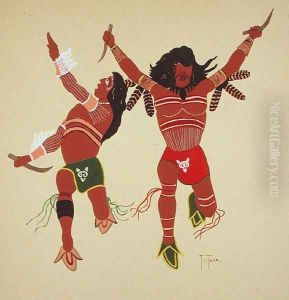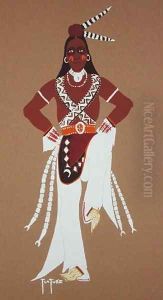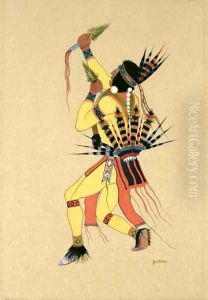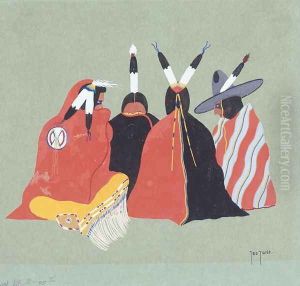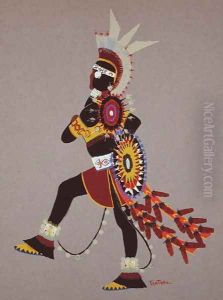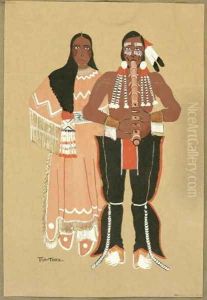Monroe Tsatoke Paintings
Monroe Tsatoke was a Native American artist, known for his contributions to the Kiowa Five, a group of Kiowa artists from Oklahoma who achieved international fame in the early 20th century. Born on August 27, 1904, in Oklahoma, Tsatoke was part of the Kiowa tribe and grew up during a period when the United States government was actively suppressing Native American cultures and languages. Despite these circumstances, he developed a strong connection to his Kiowa heritage, which would deeply influence his artistic work.
Tsatoke and the other members of the Kiowa Five – Spencer Asah, Jack Hokeah, Stephen Mopope, Lois Smoky, and later, James Auchiah – were mentored by Susie Peters, a local teacher, and Oscar B. Jacobson, the director of the University of Oklahoma's School of Art. Jacobson, in particular, played a significant role in promoting the group's art, which blended traditional Kiowa motifs with modernist aesthetics. The Kiowa Five's work was innovative for its time, as it represented a synthesis of Native American cultural themes with the principles of Western art education.
Tsatoke's personal style was characterized by vibrant colors and dynamic compositions. His work often depicted traditional Kiowa themes, such as dances, ceremonies, and warriors on horseback. He was also known for his attention to detail and his ability to convey movement in his portrayals of traditional dances and rituals.
Despite his short life, Tsatoke left a lasting impact on the world of Native American art. His legacy endures through the continued appreciation of the Kiowa Five's contributions to both Native American and American art history. Unfortunately, Monroe Tsatoke's life was cut short by tuberculosis, and he died on December 7, 1937, at the age of 33. His work continues to be celebrated and studied as an important part of the cultural renaissance of Native American art in the early 20th century.
